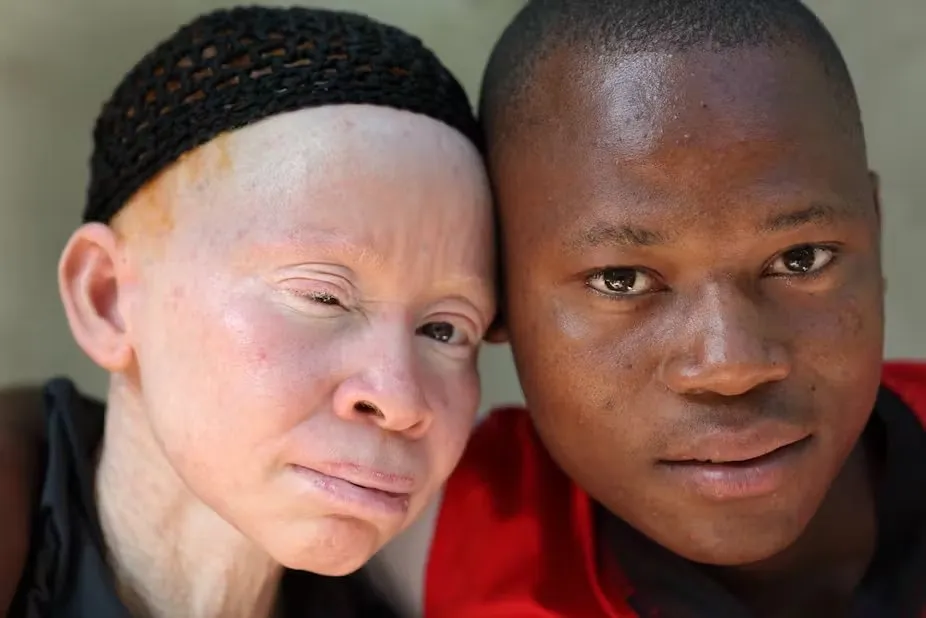Intro: Let’s be real
Judging someone’s intelligence by their skin color is plain ridiculous. Skin color basically comes down to how much melanin you’ve got—a trait shaped by a handful of genes and centuries of sun exposure in your ancestors’ homeland. In other words, living in a hotter or colder climate, or covering up more versus less, has way more impact on your skin tone than anything else. So when people try to link IQ to skin color, they’re missing the point entirely: correlation isn’t causation, and it definitely isn’t about pigmentation.
Yeah, we see all kinds of stats and studies thrown around about IQ and race, but most of it misses the point. Different groups have all sorts of unique genetic traits, and environment matters way more than how much melanin you’ve got. The story of people with albinism—who have extremely light skin no matter their ethnic background—proves just how ridiculous it is to tie intelligence to pigmentation. Instead, the real deal is about understanding genetic diversity, offering everyone equal opportunities, and seeing people for who they are—beyond skin deep.Skin color has long been a lightning rod for discrimination, prejudice, and unfounded assumptions about a person’s abilities—particularly intelligence. From the notion that one skin tone might automatically confer higher or lower IQ, to the historical abuse of individuals with albinism in parts of Africa, society continues to grapple with harmful myths rooted in ignorance. In this post, we’ll explore why correlation is not causation, how genetic diversity can create misleading statistical links, and how the experiences of people with albinism powerfully illustrate the absurdity of equating skin pigmentation with intellectual capacity.
So, let's go deeper into the rabbit hole...
Understanding Genetic Diversity and Its Role in Misleading Correlations
- What Is Genetic Diversity?
Genetic diversity is the total variety of genes within a population or species. It explains why individuals differ in traits like hair color, height, disease resistance—and yes, skin pigmentation. High genetic diversity provides more “raw material” for adaptation, meaning populations can better survive new diseases or environmental shifts. - Why It Matters for IQ
Because traits like skin color and certain health or cognitive characteristics can sometimes follow similar inheritance patterns in specific populations, it can look like skin color “predicts” intelligence or health outcomes. In reality, what’s happening is that populations with distinct histories can share gene variants that influence certain traits. Those traits are also influenced by environment, which is often the bigger factor. From nutrition to education and socioeconomic background, these variables matter far more than melanin for cognitive development. - Correlation ≠ Causation
Even if certain groups show correlations between particular genetic markers and certain abilities or vulnerabilities, that does not prove one causes the other. Correlations can arise because groups share many inherited factors—plus they may be shaped by the same external forces (like oppression or unequal resources). Sorting out which parts are truly genetic, which are environmental, and how they interact is extraordinarily complex.
Albinism: A Living Counterexample
Albinism is a genetic condition characterized by little to no melanin production. Individuals with albinism, especially in African countries, stand out starkly due to their light complexion despite generally belonging to communities with darker skin. Their experiences offer a unique vantage point on how superficial assumptions about skin color break down:
- Cultural Myths and Abuse: Some traditional beliefs label people with albinism as “cursed” or endowed with supernatural powers. This has sadly led to discrimination, stigmatization, and horrific ritualistic killings in certain regions.
- Social Exclusion: Many are denied basic opportunities like proper education or healthcare. Yet those who do have access can thrive—becoming doctors, artists, teachers—showing that melanin levels have zero bearing on intellect or potential.
- Health Challenges: Because melanin helps protect against UV radiation, people with albinism often face higher risks of skin damage and vision problems—but these challenges have nothing to do with how the brain functions.
In short, the life experiences of individuals with albinism provide a stark reminder that the relationship between skin color and intelligence is non-existent.
The Real Variables Behind Intelligence
- Environment
Nutrition, exposure to toxins, quality of schooling, parental involvement, healthcare, and socioeconomics all shape cognitive development. A child who grows up in a resource-poor setting might have a lower measured IQ—not because of genetics but because of inadequate nutrition or limited educational opportunities. - Gene–Environment Interactions
While genetics can influence how we learn and process information, the environment can either nurture or hinder that potential. With supportive conditions, people from every genetic background can flourish. - Historical and Systemic Factors
Enslavement, colonization, or legally enforced segregation may have impacted entire communities for generations. The resulting disparities in wealth, education, and health can create misleading correlations that seem tied to skin color but are truly the aftereffects of social inequities.
Why Correlation Without Context Leads to Harm
- False Attribution: Claiming certain skin tones cause higher or lower intelligence spreads harmful stereotypes and overlooks crucial social and historical realities.
- Justification of Discrimination: In the wrong hands, simplistic “studies” or anecdotes get used to rationalize oppression, racism, or denial of equal opportunities.
- Oversimplifying Complexity: Humans are highly variable. Reducing someone’s entire intellectual capacity to how much melanin they produce oversimplifies the complex interplay of genes, environment, and personal effort.
Embracing Empathy and Science
- Use Evidence-Based Reasoning
Ask whether a study or claim confuses correlation with causation. Check whether researchers controlled for confounding factors like socioeconomic status, education, and health. - Recognize the Power of Diversity
Genetic diversity enriches every population. The more variety there is, the greater the resilience and adaptability—whether we’re talking about global human populations or wildlife conservation. - Champion Equal Opportunity
A fair society invests in quality education, healthcare, and community support for all. This levels the playing field so that talent, drive, and creativity—rather than arbitrary factors like skin color—can rise to the surface.
Final Thoughts
Skin color is, at its core, just one of many genetic traits—like eye color or height—shaped by a complex web of inherited variations and environmental influences. Confusing correlation with causation ignores that intelligence emerges from a tapestry of factors: genetic diversity, early childhood experiences, cultural context, healthcare, and more. The stories of people with albinism underscore how skin pigmentation is irrelevant to a person’s innate potential—and how damaging it is when we let superficial differences define someone’s worth.
If we truly value truth and humanity, we must stand against the fallacy that melanin causes differences in intellect. Let us embrace science over superstition, empathy over prejudice, and the vibrant richness that genetic diversity brings to all of us.




